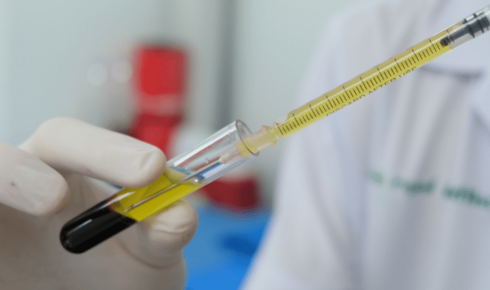Dental veneers are a popular technique for teeth whitening and restoration. This method involves bonding a thin layer of material, resembling natural tooth color, onto the surface of discolored or damaged teeth to enhance their appearance and functionality. Widely embraced by the dental community, veneers have gained immense popularity among consumers.
Veneers, also known as dental laminates, utilize adhesive technology to cover defects, discoloration, or malformations on the tooth surface while preserving the pulp and minimizing tooth reduction. At China Dental Laboratory, we often encounter cases where veneers can be installed without extensive tooth preparation, though in most instances, some preparation is necessary.
Classification
- Direct Veneer Restoration:
- This method involves shaping, curing, and polishing light-cured composite resin directly in the mouth to restore the tooth. It’s convenient and quick, but the edge shape and surface texture can be challenging to achieve due to intraoral limitations. Additionally, low monomer conversion rates during in-mouth curing can compromise the quality of the veneer, and lengthy chairside procedures limit its application.
- Resin Veneers:
- Crafted directly in the patient’s mouth using resin, resin veneers offer a swift and affordable solution for improving the aesthetics of anterior teeth affected by fluorosis, mild tetracycline staining, small teeth, diastema, or trauma-induced defects. They serve as a temporary measure for patients who cannot immediately afford porcelain or ultra-porcelain veneers.
- Indirect Veneer Restoration:
- Fabricated using ceramic or hard composite resin materials on a dental model, indirect veneers allow for extensive shaping, adjustments, and polishing outside the mouth, often resulting in superior outcomes compared to direct veneers.
- Porcelain Veneers:
- Porcelain veneers adhere thin layers of artificial porcelain to the front surface of teeth to mask imperfections and discoloration. As a conservative treatment option, they are widely used, particularly for cosmetic enhancement of young permanent teeth and anterior teeth with large pulp chambers. Porcelain veneers boast aesthetic appeal, minimal tooth reduction, resistance to fluid absorption, excellent biocompatibility, wear resistance, periodontal health benefits, and strong bonding capabilities. Based on manufacturing methods and materials, porcelain veneers can be categorized into traditional porcelain veneers, pressed porcelain veneers, and CAD/CAM machined porcelain veneers.
- Hard Resin Veneers (Ultrathin Veneers):
- Also known as super-porcelain or ceramic-like veneers, these incorporate a high concentration of ceramic particles into resin, enhancing wear resistance and aesthetics. Their clinical application is similar to porcelain veneers.
Advantages
Dental veneers offer exceptional aesthetic results for issues such as fluorosis, mild to moderate tetracycline staining, and minor malalignment, while minimizing damage to teeth. Their popularity stems from several key advantages:
- Safety:
- Minimal tooth reduction is required, sometimes eliminating the need for tooth preparation altogether. This preserves tooth structure and avoids the need for nerve removal, significantly reducing the risk of postoperative complications like pulpitis or necrosis. China Dental Lab recommend limiting tooth reduction to 0.2-0.5mm to minimize discomfort.
- Aesthetics:
- Porcelain veneers mimic the optical properties of natural teeth, ensuring a seamless blend with surrounding teeth. Free from metal components, they eliminate the risk of a dark line at the gum line, common with metal-fused porcelain crowns. A wide range of porcelain shades and staining techniques allow for precise color matching, ensuring a harmonious smile.
- Health:
- Porcelain veneers are highly translucent, allowing for a flush finish at the gum line, which protects the gums and facilitates impression-taking and bonding. Their limited contact with the gum area minimizes irritation. Furthermore, their slightly lower hardness than enamel protects opposing teeth from wear.
- Comfort:
- Unlike traditional crowns that require significant reduction of the lingual (tongue-side) tooth surface, porcelain veneers preserve most or all of the lingual tooth structure, ensuring a natural feel and avoiding the “foreign body” sensation often associated with crowns.
Suitable Candidates
Popular types of dental veneers include resin and porcelain veneers, both offering cosmetic enhancements. Typically, patients opt for 8-10 veneers per arch for optimal aesthetics. However, veneers are not suitable for all teeth types and are best suited for:
- Malformed teeth, hypoplastic enamel, and microdontia.
- Moderate to severe tetracycline staining and fluorosis.
- Teeth with incisal edge defects or extensive superficial caries.
- Mildly crowded or spaced teeth with normal occlusion, unsuitable for orthodontic treatment.
- Medication-induced discoloration.
- Hereditary yellow teeth.
- Severely damaged teeth with cracks, fractures, or deep cavities.
Patients considering veneers should proceed with caution, selecting a reputable dental clinic for a thorough evaluation and customized treatment plan to ensure optimal outcomes.
Treatment Process
- Examination and Diagnosis:
- A comprehensive oral examination to determine suitability, followed by a collaborative treatment plan involving the patient, dentist, and technician.
- Basic Treatment:
- Restorative work on cavities and professional teeth cleaning to address gum inflammation.
- Tooth Preparation:
- Minimal to moderate reduction of the tooth surface as needed.
- Impression, Model, and Shade Selection:
- Taking impressions using silicone or elastic materials, pouring working models, and selecting the appropriate shade to match adjacent teeth.
- Temporary Restoration:
- Fabrication, trial fitting, and adjustment of a temporary veneer.
Second Visit
- Veneer Bonding:
- Trial fitting, permanent bonding using specialized adhesives, and removal of excess material for a smooth finish.
- Occlusal Adjustment:
- Ensuring proper bite alignment to prevent fracture of the thin veneer material.
Maintenance Methods for Veneers
Many people opt for dental veneers for teeth whitening, believing that it is a “one-time solution.” However, from a professional perspective, the whitening effect of veneers requires meticulous care from patients to maintain. The better you care for your dental veneers, the longer they will last. The following tips may be helpful:
Avoid consuming excessively cold or hot foods shortly after veneer restoration. This is because the acid etching of the tooth surface before bonding the veneer may cause tooth sensitivity. Cold or hot stimuli may exacerbate this symptom and even irritate the pulp, leading to pulpitis.
-
- Brushing Care:
(1) It is recommended to use a soft-bristled toothbrush and avoid brushing too vigorously.
(2) Avoid using coarse-grained toothpaste as the particles in it can affect the smoothness of the veneer.
(3) Pay attention to cleaning the gum line. - Flossing:
(1) It is advisable to use dental floss at least once a day to remove soft plaque from between teeth.
(2) Start by practicing with floss in one position and then carefully use it in each position. - Dietary Considerations:
(1) Try to avoid consuming red wine, tea, coffee, and plum-based foods, as they can cause pigmentation on the veneers.
(2) Be extra cautious when eating hard foods to avoid damaging the veneers. - Stay Away from Tobacco:
(1) It is recommended to quit smoking immediately.
(2) Avoid chewing tobacco as any form of tobacco can cause pigmentation on the veneers. - Follow-up Visits:
While veneers can enhance your smile, developing good oral hygiene habits and adhering to regular dental check-ups can help maintain healthy teeth.
- Brushing Care:
















+ There are no comments
Add yours